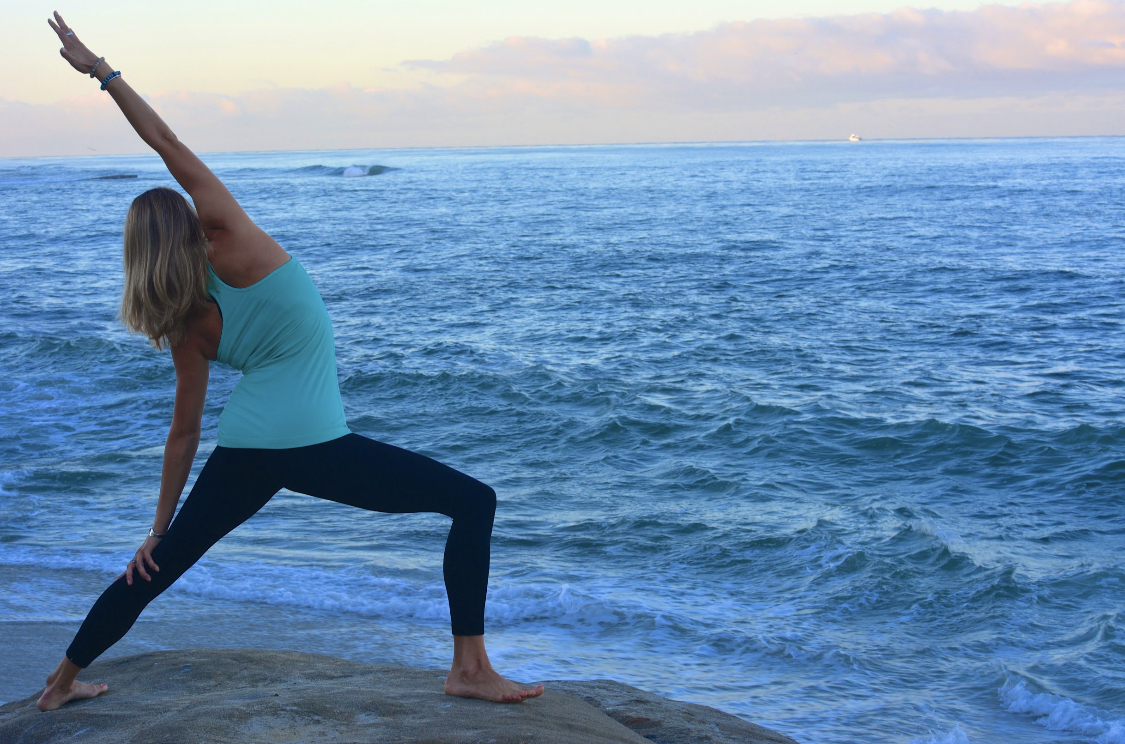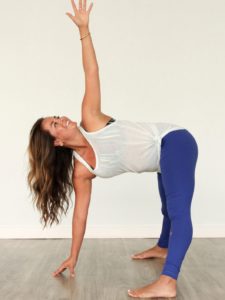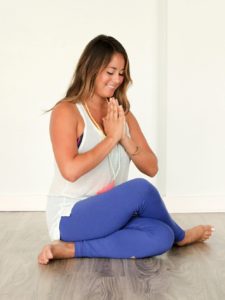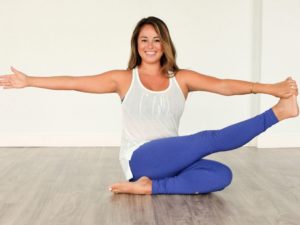
When it comes to starting a yoga practice, choosing where to start can be confusing. There are different styles and levels with very little clear information on what it all means. Beginning an online yoga practice is like deciphering a whole new language with no translator! At YourBuddhi, we try to make it clear and simple. After all of the years Carolina and Amanda have been teaching, they have learned from talking to hundreds of students that people LOVE to flow. There are many reasons why flowing has a powerful effect on students. Here we share the most important insights we have gathered from our own research and experience.
Beginner Flow Yoga Teaches New Yogis How to Breathe
 We can’t say it enough! The healing power of yoga lies in the breath. If you aren’t breathing, you’re not doing yoga. When new people start a yoga practice, they are so concerned with “getting the moves” that they often forget to breathe. Unfortunately, many teachers don’t focus enough on the breath. Our motto is breath first. Everything else is secondary. If you are able to maintain a slow and steady breath rhythm, than you know what you’re doing is safe. If you’re pushing yourself and struggling to “nail the pose,” your breath will be short and you won’t be able to control it. This is not only why injuries occur in yoga, but it’s also why beginners quit. Struggling is stressful and yoga is supposed to have a calming effect. If you’re pushing yourself beyond your limits, the class is going to feel terrible.
We can’t say it enough! The healing power of yoga lies in the breath. If you aren’t breathing, you’re not doing yoga. When new people start a yoga practice, they are so concerned with “getting the moves” that they often forget to breathe. Unfortunately, many teachers don’t focus enough on the breath. Our motto is breath first. Everything else is secondary. If you are able to maintain a slow and steady breath rhythm, than you know what you’re doing is safe. If you’re pushing yourself and struggling to “nail the pose,” your breath will be short and you won’t be able to control it. This is not only why injuries occur in yoga, but it’s also why beginners quit. Struggling is stressful and yoga is supposed to have a calming effect. If you’re pushing yourself beyond your limits, the class is going to feel terrible.
Beginner flow yoga focuses on linking breath to movement. Movement follows breath, as if you couldn’t move without the fuel of the inhale and the exhale. The teachers in our classes give breath cues while you’re holding a pose and when you transition to a new one. The breath is a focal point throughout the entire class. Even when something is physically challenging, if you’re guided by the breath it’s going to have a calming effect on the nervous system.
Vinyasa Flow Has a Calming Effect on the Nervous System
 When the system is calm, the body moves into a healing state. Deep breathing is like flipping a switch for the autonomic nervous system, or the ANS. The ANS has two parts: the sympathetic (SNS) and the parasympathetic nervous systems (PNS). Both internal and external stress flips the SNS into action. When we operate from the SNS, the heart rate and blood pressure go up, breathing is short and shallow, the blood flows to the brains and limbs, and the adrenal glands dump cortisol into the bloodstream.
When the system is calm, the body moves into a healing state. Deep breathing is like flipping a switch for the autonomic nervous system, or the ANS. The ANS has two parts: the sympathetic (SNS) and the parasympathetic nervous systems (PNS). Both internal and external stress flips the SNS into action. When we operate from the SNS, the heart rate and blood pressure go up, breathing is short and shallow, the blood flows to the brains and limbs, and the adrenal glands dump cortisol into the bloodstream.
Sustained deep breathing even just for a few minutes flips on the PNS and induces the relaxation response. The heart rate and blood pressure decrease. The blood flows back to the organs so that your systems (digestion, cardiovascular, immune, reproductive) function in an optimal way. We release acetylcholine instead of cortisol, which plays a role in motivation, arousal, attention, learning, memory, and is also involved in promoting REM sleep. Flow yoga is a meditation in motion. Not only are you breathing deeply, but you are moving your body in a beautiful and steady dance. The breath and movement together is like a symphony of actions that result in a very calm and healthy nervous system.
Flow Yoga is the Best Way to Increase Strength and Flexibility
 The yoga sutras are what many consider to be the “bible” of yoga. One sutra in particular focuses on the ideas of shtira and sukha, which respectively translate to strength and ease. All yoga poses should have a balance between effort and relaxation, or strength and ease. Activate the muscles in a yoga posture while maintaining a calm enough demeanor to keep the breath slow and calm. My yoga teacher always called this balanced action a state of equanimity. Maintaining this balance throughout an entire yoga class makes it easy to develop both strength and flexibility in the joints and muscles. In beginner flow yoga, finding a state of equanimity is enhanced. The sequencing is very smooth and has a dance-like quality. Many movements are repeated to let the central nervous system know that it is safe to allow the muscles to stretch. It’s almost like a lullaby for your musculoskeletal system. We ease into everything gradually and class is like a wave. Warming up toward a peak of heat and pliability and then cooling down toward your final rest, or savasana.
The yoga sutras are what many consider to be the “bible” of yoga. One sutra in particular focuses on the ideas of shtira and sukha, which respectively translate to strength and ease. All yoga poses should have a balance between effort and relaxation, or strength and ease. Activate the muscles in a yoga posture while maintaining a calm enough demeanor to keep the breath slow and calm. My yoga teacher always called this balanced action a state of equanimity. Maintaining this balance throughout an entire yoga class makes it easy to develop both strength and flexibility in the joints and muscles. In beginner flow yoga, finding a state of equanimity is enhanced. The sequencing is very smooth and has a dance-like quality. Many movements are repeated to let the central nervous system know that it is safe to allow the muscles to stretch. It’s almost like a lullaby for your musculoskeletal system. We ease into everything gradually and class is like a wave. Warming up toward a peak of heat and pliability and then cooling down toward your final rest, or savasana.
If you are brand new to yoga, try our Beginner Yoga and Slow Flow classes.
If you’re not a member yet, start your free trial today and get your first two weeks free!

Leave a Reply
You must be logged in to post a comment.